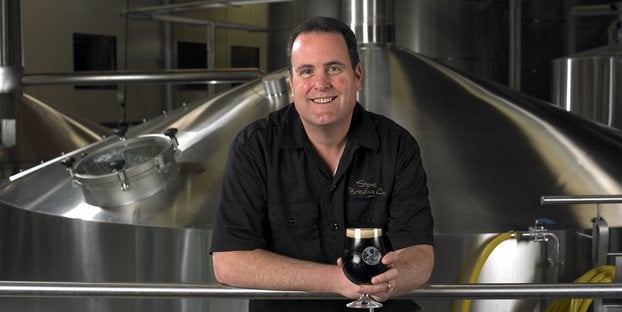
A young beer must be properly conditioned and stored if it’s to become a mature, well-rounded, fermented and carbonated craft beverage. Specifically when the fermentation process is complete, a newborn beer needs to be filtered, chilled, carbonated and aged into a sophisticated and seasoned draft, which takes a variety of vessels and processes. There’s not one particular way to do this. A uni-tank is a fermentation tank that has both primary and secondary fermenting and aging functions in one tank. Other craft breweries will use a conical fermentation vessel and a conditioning tank for aging and maturing.
Whatever the process, after conditioning (which can take anywhere from one to six or more weeks), the beer is filtered to remove any remaining yeast and large proteins. That clarified beer is known as bright beer because of its non-cloudy nature. That bright beer is then transferred to a bright beer tank. Often called a “brite” beer tank, serving tank or secondary tank, a bright tank is the vessel in which beer is placed after primary fermentation and filtering, so it can further mature, clarify and carbonate, as well as be stored for kegging, bottling, canning and packaging. In brewpubs, bright beer tanks can even do double-duty as serving vessels.
While the engineering and function of a bright tank isn’t nearly as complicated as a brewhouse or bottling line, these vessels have important functions and maintenance items. For instance, temperature is very important. While your typical fermenter needs to run at 68 to 72 degrees Fahrenheit, you want your beer and bright tank at 32 degrees Fahrenheit to get it to carb up properly. Bright tanks must be engineered to be cold and hold pressure, sometimes act as post filtration and be easy to clean and service.
To learn more about the function, maintenance and manufacturers of bright tanks, we reached out to a few of the best craft breweries in America to get their insights and advice on these important brewing vessels. Escondido, Calif.’s Stone Brewing Co. is the 10th largest craft brewery in the United States (by 2012 beer sales volume), according to the Brewers Association. The company has been averaging about 41 percent year-to-year growth over the past 16 years, and today its impressive portfolio of craft beer is currently distributed to 37 states, plus Washington, D.C., as well as exported to the United Kingdom, Sweden, Japan and Singapore.
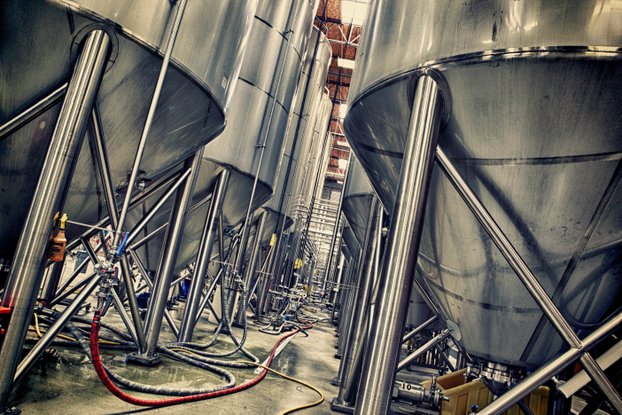
When it comes to planning, making and creating that beer, brewmaster Mitch Steele has his hands in all of Stone’s bold craft creations, working beneath president, original brewmaster and co-founder Steve Wagner. Back in 2006, Stone wisely hired Steele from Anheuser-Busch; he was assistant brewmaster for Anheuser-Busch’s Merrimack, N.H., facility. Steele has well over 10 years of mega-production brewing experience and 14 years of craft brewing experience, making him uniquely qualified to talk about almost any facet of the brewing process. We asked Steele to give us some insights on bright tanks, and he kindly obliged with the excellent Q&A below.
Craft Brewing Business (CBB): Mitch, again, thanks for taking the time to talk. We loved the story we did with you on Stone Levitation Ale back in March, which got a great response from our readers. Today, we’d like to talk about bright beer tanks and their function in the brewing process. First off, can you in your own words explain what exactly a bright beer tank does, and what it specifically does at Stone?
Steele: A bright tank is the storage tank of package-ready beer. From this tank, we ensure that the beer is analytically sound and that the taste is exceptional. Once that is complete, we designate the beer as ‘released for packaging,’ and the team that operates the bottling line and/or keg line can package the beer.
CBB: How many bright tanks does Stone currently use, and how much capacity do those tanks have?
Steele: We have 13 in service. Their total capacity is 6,660 barrels [bbls]. We don’t have secondary fermentation at Stone Brewing Co. We primary ferment and age in the same conical tank, then centrifuge and filter the beer into the bright tank.
CBB: What are the brands of those bright tanks?
Steele: Our tanks are from Mueller in Springfield, Mo. They build quality brewing equipment, and we’ve worked with them for years.
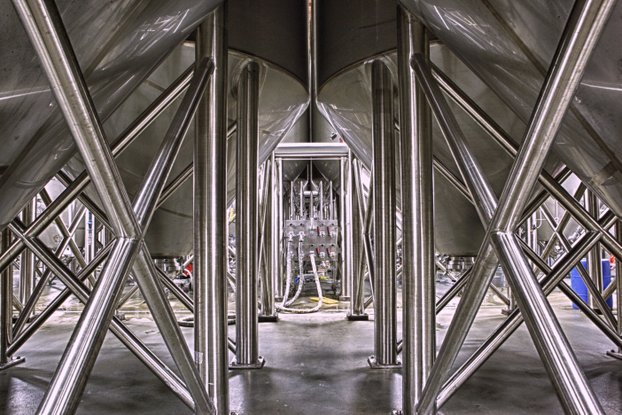
CBB: Besides quality equipment, what else drew you to Mueller? How important is it to have a good relationship with a particular vessel manufacturer?
Steele: Customer service, on-time delivery and of course, price, are major factors in making the decision of which supplier to use.
CBB: When buying bright tanks, what particulars should play into a brewery’s buying formula?
Steele: I would say the quality of tank construction, the relationship with the manufacturer, lead time and price. Also, do your homework. Check things like your glycol heat transfer calculations and make sure the glycol jackets are properly sized, so that your refrigeration system is properly sized to keep the beer as cold as it should be.
CBB: What advice would you give a new brewer or brewhouse when operating a bright tank?
Steele: We check the CO2 levels in the beer stored in bright tanks every day. It’s a good way to find out if your pressure relief valve [PRV] or some other valve is leaking. Try to maintain constant CO2 pressure in the headspace on the beer. Altering the pressure changes the carbonation levels of the beer.
CBB: What advice would you give someone when it comes to cleaning and maintaining a batch of bright tanks?
Steele: There are a lot of good brewery cleaning chemical suppliers out there. If you find a good acid cleaner, you can leave the tank charged with CO2 during cleaning and not waste the gas. Caustic cleaners require the blow down of CO2 and re-gassing the tank to purify it after the cleaning. Caustic cleaners react with CO2, which then neutralizes the caustic. Also, when working with cleaning chemicals, we mandate safety goggles and elbow-length gloves.
CBB: Along with making great beers, Stone continues to expand its operations to serve and distribute those beers. I noticed that your second farm-to-table restaurant, Stone Brewing World Bistro & Gardens — Liberty Station, is open for business. Can you tell us a little bit about San Diego’s Liberty Station, the restaurant and the shiny new brewhouse you have there?
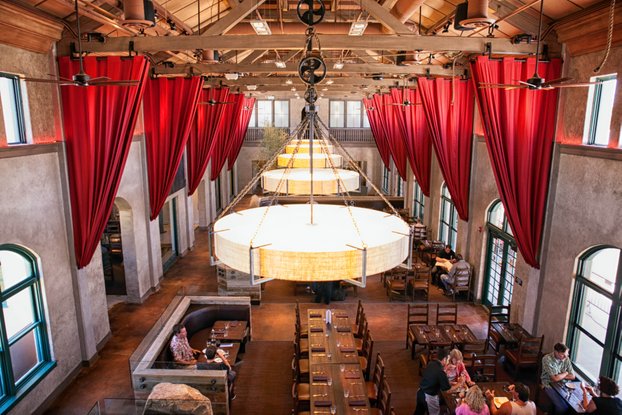
Steele: We opened the doors to Stone Brewing World Bistro & Gardens — Liberty Station on May 15, and started brewing on the 10-bbl brewhouse shortly before that. We are really excited to finally have a space where we can brew special, one-off beers that we can’t brew on our larger system. We’ve already made some unique brews that are on tap at the restaurant. A few we have brewing now include: Stone Brewing World Bistro & Gardens — Liberty Station Angry and Wit, a wit IPA brewed with lemon verbena and coriander; Stone Brewing Bistro & Gardens — Liberty Station 12/15 IPA, a session IPA brewed with four unique hop varieties for the Ales for ALS fundraising program; Stone Delicious IPA which will be poured at the Oregon Brewers Festival; and Stone Brewing World Bistro & Gardens — Liberty Station Matt’s Thrill Rye’d IPA, a rye IPA that will be served at the restaurant.
The restaurant is pretty magnificent — 55,000 sq ft and includes two bocce ball courts, a movie courtyard, private banquet rooms and garden and outdoor patio space. The restaurant is in the now-historic Naval Training Center so there is a lot of unique architecture, but we were still able to add the signature Stone Brewing Co. look, which includes slabs of granite, water features, plants, refurbished wood, metal and, of course, stone!
CBB: Along with Stone Brewing World Bistro & Gardens — Liberty Station, Stone’s been busy adding capacity at its Escondido brewery, maintaining and expanding its offerings at Stone Farms which supplies all its produce to the restaurants and the Stone Brewing World Bistro & Gardens being built in Terminal 2 of the San Diego International Airport. But what about plans for a second big brewery? A few years ago, Stone published a formal Request for Proposal to evaluate potential sites for a brewhouse in Europe. Is that idea still on the table?
Steele: I would say it’s still on the table, but it’s been put at the bottom of the pile because of all the current and future projects that we’ve been busy focusing on. In addition to what you mention above, we are almost ready to move into Stone Packaging Hall located next to our brewery in Escondido. It will house our bottling and kegging lines, some offices, 13 bright tanks for now — we will relocate eight that are currently in the main brewery building — a quality assurance laboratory and equipment storage. This will be a large transition, but once completed it will provide us with additional room to hopefully increase production.

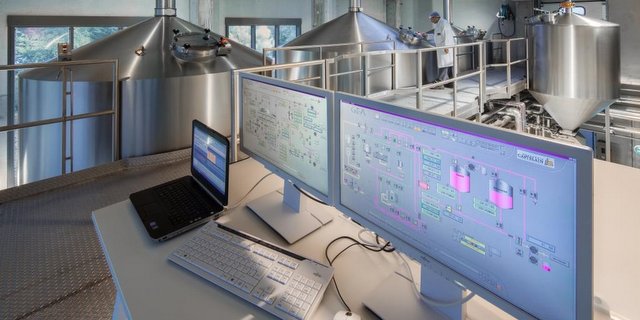
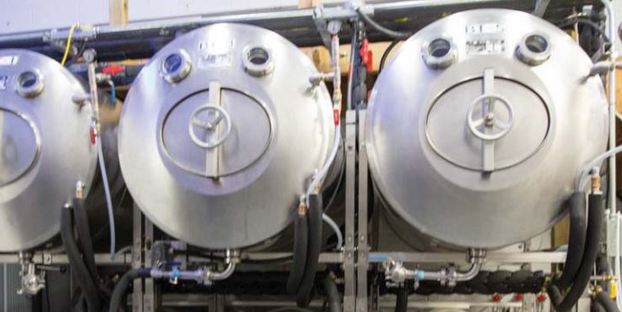
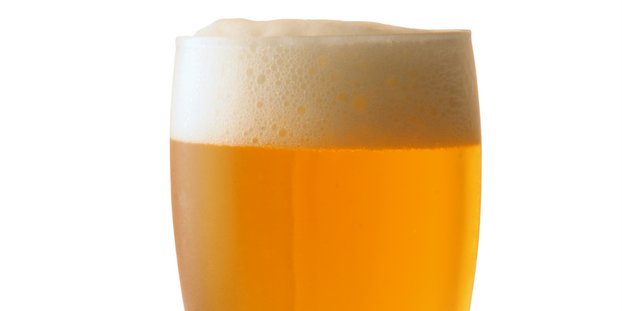
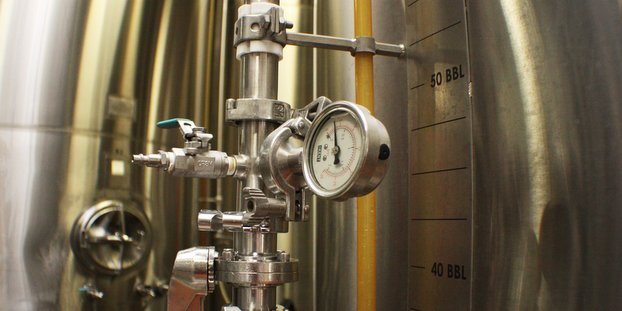

[…] 2015, premises use (brite tank sales) were equal to 3.3 percent of total shipments in Colorado, the highest percentage in the nation. […]